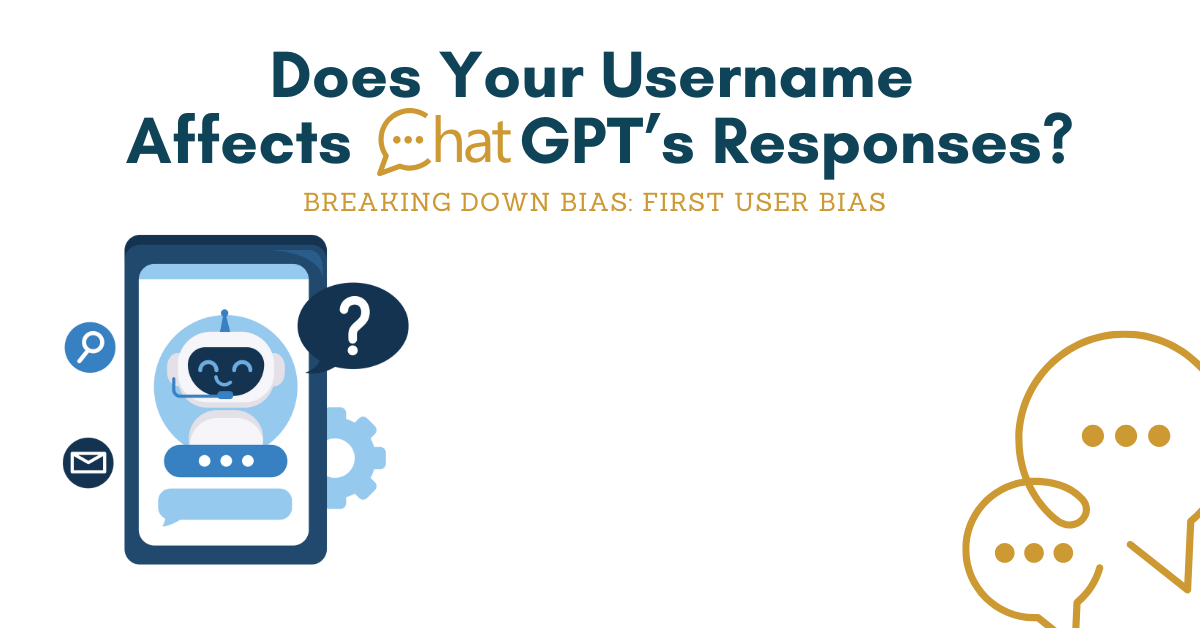The use of AI comes with negative effects on nature, such as high water consumption and CO2 emissions. On the other hand, you probably have noticed that it can be extremely helpful when studying or preparing lessons. Therefore, it is important to find a good balance where AI can add value, but without neglecting concerns about the environment. Therefore, being well-informed about the energy consumption of AI helps you to find a middle ground between these conflicting values. For this reason, we have outlined various methods here to guide you on what you can personally do to reduce external AI environmental costs.
5 Tips to Reduce Your AI Carbon Footprint
Reflect on Whether You Need AI for Each Task
The most straightforward way to reduce the environmental impact of AI is to stop AI usage.
This option overlooks the added value that AI can provide. Therefore, it is important to evaluate whether AI usage is truly beneficial carefully. This means being selective and critical about when and where to use AI solutions like the ChatGPT models. Before prompting ChatGPT, consider some reflective example questions we have created. These questions will help you think about which types of prompts would be more suitable for AI and which ones are perfectly suitable and can be handled by other methods, such as a simple Google web search.
Discover the broader environmental impacts of AI, including its energy and water consumption, in our article.
Reflective Questions whether AI Usage is Necessary
Is the question simple and factual?
Yes: Consider using a simple web search or checking course materials. For example, “What year did World War II start?” or “What is the formula for calculating the area of a circle?” can often be quickly found in textbooks, lecture notes, or a quick web search, like
BingandGoogle.No: AI usage might be beneficial if the question requires more depth or synthesis of information.
- Is the answer to my question already available in an existing course document, textbook, or syllabus?
- Yes: Check those resources first. If the answer is available in your lecture notes, course textbook, or class slides, there’s no need to use AI.
- No: AI usage can be beneficial if the information is not readily accessible.
- Does the problem require deep contextual understanding or creative problem-solving?
- Yes: AI might be helpful if the assignment involves tasks like summarizing complex readings or analyzing different perspectives in a research paper.
- No: Consider simpler alternatives like asking classmates, joining a study group, or consulting your professor during office hours.
- Is the question time-sensitive or needs constant updates?
- Yes: If your question is about something that changes often, like news, weather, or current events: Use a web search. AI might not have the latest information.
- No: If your question is about something that doesn’t change much, like historical facts, definitions, or general knowledge: Ask AI. It’s great for answering questions based on well-known, reliable information.
- Is the answer you are seeking prone to opinions or other subjective content?
- No: If objective information or a structured explanation is needed (e.g., understanding a specific concept), AI could be of use. Keep in mind that AI responses may vary in accuracy.
- Yes: Engaging with peers in discussion forums, reading course reviews, or participating in study groups may provide more diverse and relatable insights.
- Is the computational cost justified by the expected benefit?
- Yes: If the task’s benefit significantly outweighs the energy cost (like complex data analysis), using AI can be justified.
- No: Opt for a simpler, less energy-intensive solution.
- Can a less powerful AI model be used instead of the AI model you intend to use?
- Yes: For example, if you’re considering using GPT-4 for a simple query, consider whether a smaller model like GPT-3.5 could handle the task just as effectively. For straightforward or less complex questions, a smaller model will suffice, conserving both time and computational resources.
- No: If a task is highly complex or requires advanced reasoning, using a more robust model might be justified.
Use the Right AI Models for Your Needs
Larger AI models, such as GPT-4, offer advanced capabilities, and can handle a wide range of complex tasks. However, they also consume significantly more computational resources, leading to higher CO2 emissions. To minimize environmental impact, it’s important to use these models only when their advanced features truly add value. For simpler tasks, like generating short texts, captions, or headlines, consider using smaller models like GPT-3.5 or even lighter AI tools, which are more energy-efficient and still sufficient for basic needs.
Available AI Models and Their Suggested Uses
gpt-3.5-turbo: This model is efficient and budget-friendly.- Best for: General tasks that don’t need the most advanced features. It’s great for simple to moderately complex text, casual conversations, and straightforward questions.
- Examples: Basic factual questions, explaining terminology, drafting emails, summarizing short articles, quick Q&A.-
gpt-4o(o stands for optimized): A version ofGPT-4designed to save costs and increase efficiency.- Best for: General tasks that need GPT-4’s robustness while keeping energy use and cost low. Ideal for complex tasks that don’t need the full power of GPT-4.
- Examples: Writing sophisticated articles, generating high-quality summaries, and handling in-depth prompt iterations.
gpt-4: The most advanced model with the highest capabilities.- Best for: Very complex and creative tasks that need deep understanding, complex reasoning, and lots of context.
- Examples: Complex research, advanced programming help, detailed terminology explanations.
Reuse and Recycle AI Responses
When interacting with AI models, generating a new response for every repeated question can lead to unnecessary computational costs, increased energy consumption, and higher expenses. The solution is simple: instead of having the AI model generate a fresh response each time, use stored responses for future use. This can avoid unnecessary recomputation, thereby saving energy.
Limit Output Length of AI Models
When using ChatGPT for various tasks, each response generated consumes computational power, indirectly contributing to energy use and environmental impact. One effective way to minimize this impact is to limit the length of the responses by providing specific instructions in your prompts. This approach reduces the resources needed to generate the response, making your AI use more eco-friendly.
Why Limiting Response Length Matters
- Reduced Computational Load: Shorter responses require less processing power, which decreases the energy consumption of the servers running ChatGPT. This is particularly useful for straightforward tasks where detailed or lengthy answers are unnecessary.
- Improved Energy Efficiency: Every additional word generated requires extra computation. By keeping responses concise, you minimize the environmental footprint associated with each interaction with ChatGPT.
- Faster Responses: Shorter outputs mean quicker results, saving time.
Short Responses Don’t Mean Lesser Quality: Limiting the length of ChatGPT’s responses doesn’t necessarily mean sacrificing quality. By providing clear and specific instructions, you can guide ChatGPT to deliver concise, high-quality answers that are rich in relevant information. With the right prompting techniques, you can make sure that shorter outputs remain valuable, focused, and effective for your needs.
How to Ensure High-Quality Short Responses
- Define Your Needs Clearly: Clearly state what you are looking for in the response. Use specific instructions to guide the AI toward producing the most relevant information.
- Focus on Key Points: Encourage the AI to prioritize the most important aspects or elements of the topic.
Use Constraints Wisely: Combine length constraints with context or audience directives to shape the response appropriately.
How to Limit ChatGPT‘s Output
- Be Specific About Length: Clearly define word or sentence limits.
- Example: “Summarize the main causes of climate change in 50 words.”
- Example: “Explain ‘machine learning’ in one sentence.”
- Use Contextual Language: Include context to guide the AI.
- Example: “In two sentences, explain the Nash equilibrium for economics undergraduates.”
- Example: “Outline the ethical implications of AGI development in 100 words.”
Example Case
Let’s start with a simple and very basic prompt and refine it to be more developed, guiding ChatGPT to deliver more precise, tailored responses, while simultaneously ensuring a short output from ChatGPT.
- Basic Prompt: “Explain climate change.”
This prompt is broad and may result in a lengthy, unfocused response.
2. Refined Prompt: “Explain the primary causes of climate change in 100 words.”
Adding a word limit makes the response more concise
3. Contextualized Prompt: “In 100 words, summarize the primary causes of climate change, focusing on human activities.”
Providing context helps direct the AI to focus on a specific aspect of climate change.
4. Contextualized, Audience-Specific Prompt: “For a policy briefing, summarize in 100 words the primary causes of climate change, emphasizing human activities.“
Specifying the audience (policy briefing) and focus (human activities) makes the output highly relevant and targeted.
As we have shown in our example case, by limiting the length of ChatGPT’s responses, you can reduce the environmental impact of your AI usage without compromising on quality. With the right prompting techniques you can make sure that your AI-generated content is both concise and high-value, supporting sustainable practices while meeting your needs.
Batch Your Prompts for Efficient AI Usage
When prompting AI models, each prompt consumes computational power, indirectly contributing to energy consumption and environmental impact. One effective way to cut these costs is by batching prompts, grouping multiple questions or tasks into a single request. For students, this can be a practical strategy to reduce the carbon footprint associated with AI usage while staying productive.
Why Batching Prompts Matters for Sustainability
- Lower Energy Consumption: Every time you make an interaction with
ChatGPTcall, it requires server resources and energy. By combining multiple queries into a single call, you reduce the number of requests, cutting down on overall energy use. - Decreased Carbon Footprint: Fewer interactions mean less computational work, which translates into lower carbon emissions.
- Cost-Effective Learning: Beyond environmental benefits, batching prompts can also save money by reducing the total number of calls made to an AI service.
How to Implement Batching
Please complete the following tasks, restating each prompt before providing the answer:
Task 1: ENTER TASK 1 HERE
Task 2: ENTER TASK 2 HERE
Task 3: ENTER TASK 3 HERE
Task 4: ENTER TASK 4 HERE
Format your responses as follows:
Prompt: Restate Task 1.
Answer: [Your answer here]
Prompt: Restate Task 2.
Answer: [Your answer here]
Prompt: Restate Task 3.
Answer: [Your answer here]
Prompt: Restate Task 4.
Prompt Explanation:
- Use Clear Task Definitions: Outline each task with specific instructions, like word limits or formats, to help
ChatGPTgive concise and relevant responses. - Restating Prompts: Ask ChatGPT to repeat each prompt before answering, which helps keep the structure and clarity.
- Formatted Responses: Use a structured format with bullet points or numbering to manage the output.
Plan Your Queries: Before prompting ChatGPT, list all the questions or tasks you need help with. Group them logically so the AI’s response is clear and well-organized.
Conclusion: Embrace Mindful AI Use
You have probably used the benefits of AI technology in academic settings, offering advantages like efficient data analysis, quick access to information, and creative problem-solving support. However, these benefits come with environmental costs, such as high energy consumption and CO2 emissions. We at tilburg.ai believe that finding a balance between leveraging AI’s capabilities and minimizing its ecological and AI carbon footprint is important.
That’s why this article has provided practical strategies to help you use AI more sustainably:
- Reflect on the Necessity of AI Usage: Evaluate whether using AI is essential for each task. If simpler alternatives like web searches, textbooks, or discussions with peers suffice, opt for those options to reduce unnecessary energy consumption.
- Use Appropriate AI Models: Choose models that are best suited for your specific needs. For example, use smaller, less resource-intensive models like
GPT-3.5for simpler prompts, and reserve advanced models likeGPT-4for complex tasks that truly require their capabilities. - Reuse and Recycle AI Responses: reuse earlier AI-generated responses whenever possible, especially for repetitive questions.
- Limit Output Length: Control the length of AI-generated responses by specifying output limitations. Shorter responses require less computational power, thus reducing both energy usage and response time.
- Batch Your Prompts: Combine multiple questions or tasks into a single prompt to minimize the number of prompts.
By adopting these strategies, you can reduce the environmental impact of AI while still benefiting from its innovative capabilities. Remember, every conscious decision you make regarding AI usage contributes to more sustainable technology practices. Embrace mindful AI use.




